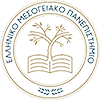In the framework of the “NSRF 2014-2020” and the invitation “Support of researchers with emphasis on young researchers-cycle B” program code EDBM-103, two research projects were succesfully evaluated and are now hosted in IPPL:
-
Development and optimization of betatron type radiation source produced by ultra-strong electromagnetic laser fields
-
Mitigation study of plasma instabilities in Z-pinch devices using dielectric coatings
Development and optimization of betatron type radiation source produced by ultra-strong electromagnetic laser fields
The purpose of this research project is the experimental implementation of a source to produce betatron X-rays during the interaction of ultra-strong laser pulses with gaseous targets. Betatron radiation is produced during the relativistic acceleration of electrons due to ionization by the ultra-strong electromagnetic field of the laser. Until recently, this was only possible using large particle accelerators known as synchrotrons. In recent years, however, a new method has emerged that relies on the relativistic acceleration of electrons when ultra-strong and ultra-short laser pulses interact with matter. This radiation due to the very small dimensions of the source (a few μm) demonstrates very good phase coherence and relatively high brightness. The above features make it ideal for use in imaging methods with high demands on resolution that reaches the scale of hundreds of nanometers. The development of such sources has therefore attracted the interest of many scientific groups worldwide. The research team of the present project is committed to the experimental implementation in Greece of such a source and to conduct for the first time a systematic optimization study, thus offering the prospect of conducting basic research in this field and its future applications.
First deliverable, Publication in International Conference:
https://doi.org/10.1364/UP.2020.Tu4A.12
Second deliverable, Publication in peer-reviewed scientific journal:
A. Grigoriadis, G. Andrianaki, M. Tatarakis, E.P. Benis, N.A. Papadogiannis, Betatron-type laser-plasma x-ray sources generated in multi-electron gas targets, Applied Physics Letters 118, 131110 (2021).
https://aip.scitation.org/doi/full/10.1063/5.0046184
Mitigation study of plasma instabilities in Z-pinch devices using dielectric coatings
We have recently demonstrated, in a related publication in the journal Nature Communications, that the effective study of plasma dynamics requires the incorporation of the inherent real physical characteristics of the solid target. The study was performed on a single-wire Z-pinch device, a representative device with extensive international literature, for understanding plasma dynamics and the development of plasma instabilities. We studied the heating of the cylindrical target via computer simulations and experiments, from its solid to the plasma state taking into account the phase changes of matter for the first time. The agreement of the results showed that the incorporation of the mechanical physical properties of the solid target is a catalyst for understanding the instabilities that develop in the target before plasma formation and are a precursor to the creation of magnetohydrodynamic (MHD) instabilities in plasma. We named this instability prior plasma formation electrothermomechanical (electrothermomechanical, ETM). Extending the successful study, the subject of the present study concerns the study of the suppression of plasma instabilities using dielectric coated wires. The use of dielectric coatings can reduce the growth rate of ETM instabilities of the metal target and at the same time improve the energy deposition in the target, to increase the expansion radius of the produced plasma. Our goal is to reduce the developing ETM instabilities and subsequent MHD instabilities in plasma and succeeding to increase the efficiency of the Z-pinch device.
First deliverable, Publication in International Conference:
https://doi.org/10.1088/1742-6596/1730/1/012092
Second deliverable, Publication in peer-reviewed scientific journal:
E. Kaselouris, G. Tamiolakis, I. Fitilis, A. Skoulakis, V. Dimitriou, M. Tatarakis, Instability growth mitigation study of a dielectric coated metallic wire in a low current Z-pinch configuration, Plasma Physics and Controlled Fusion 63, 085010 (2021).

